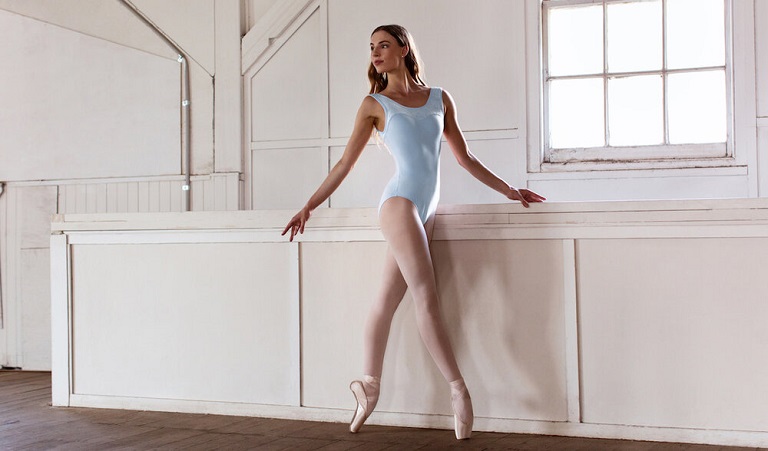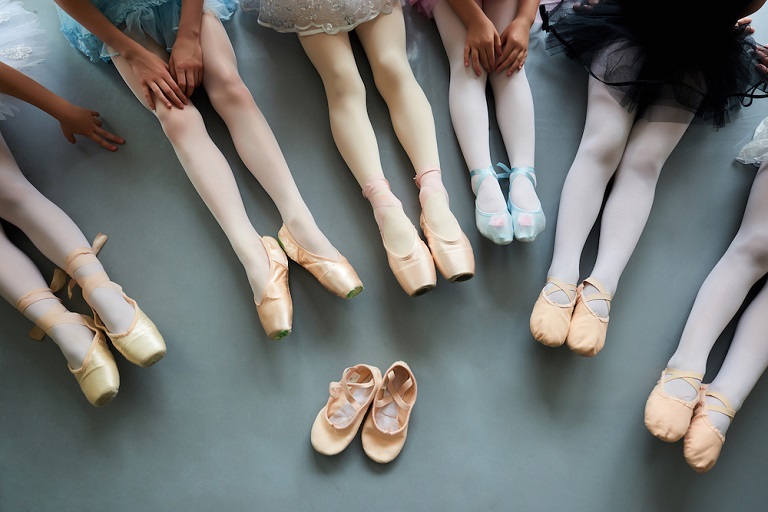Ballet is an enchanting blend of art and athleticism, demanding extensive preparation and practice from every dancer to master its intricacies. While hard work is key to success, the clothing you wear plays a crucial role in your performance. Each item in a dancer’s wardrobe serves a specific purpose, from enhancing performance to ensuring comfort and safety. Let’s step into the world of ballet and explore the essentials that help dancers bring their graceful movements to life.
Leotards

A leotard is the cornerstone of ballet attire. This skin-tight suit covers the body from the shoulders to the crotch, allowing for greater mobility and stability during difficult ballet moves. Available in various designs—sleeveless, short-sleeved, or long-sleeved— there’s a variety of comfortable leotards designed to provide the freedom of movement that dancers need.
The fabric used in leotards is crucial for their functionality. Common materials include cotton, lycra, spandex, and nylon. Each has its pros and cons. Cotton leotards, for instance, are soft and breathable, making them ideal for long practice sessions where comfort is essential. However, cotton doesn’t offer the same level of flexibility as lycra or spandex. Lycra and spandex provide excellent stretch and resilience, allowing dancers to move freely and perform complex movements without restriction. These materials also wick away moisture, keeping dancers dry and comfortable during intense rehearsals.
Leotards are not just functional but also essential for the visual aspect of ballet. They allow the audience to fully appreciate the dancer’s movements and precision, giving an impression of lightness and flight while accentuating the dancer’s form. Additionally, leotards enable teachers to assess a dancer’s alignment and posture, helping to prevent injuries by ensuring proper technique.
When choosing a leotard, fit is paramount. The leotard should fit perfectly—not too tight to restrict breathing, but not so loose that it sags. If you’re unsure, try it on and move around to ensure it offers the right balance of comfort and support. The right leotard can significantly impact your performance, making it a vital part of your ballet wardrobe. In terms of design, there are plenty of options available. Leotards come in various colours, allowing you to express your personal style while adhering to the dress code. Some leotards even feature intricate detailing, adding a touch of elegance that combines practicality with grace.
Tutus
The tutu is perhaps the most iconic piece of ballet clothing, primarily worn for performances rather than practice. Made of multiple layers of tulle, tutus create a voluminous skirt that can be short and stiff—known as the classical tutu—or long and flowing. Tutus not only enhance the visual appeal of a performance but also serve a functional purpose by allowing the audience to see the intricate footwork and leg movements of the dancer. Despite their delicate appearance, tutus are meticulously crafted to withstand the rigours of performance, securely attached to the torso to stay in place throughout the entire routine.
Dance Shoes

Dance shoes are an indispensable part of a ballet dancer’s wardrobe, with two main types: ballet slippers and pointe shoes. Ballet slippers are made of soft leather or canvas and are designed to allow dancers to feel the floor and execute movements with precision. These shoes are typically worn by beginners. Pointe shoes, on the other hand, are used by advanced dancers to perform on the tips of their toes. These shoes feature a hard, reinforced toe box and a stiff shank to support the foot. Proper fitting and training are essential when using pointe shoes, as they place significant stress on the feet and ankles.
Leggings
Leggings are often worn during warm-ups and rehearsals, rarely making an appearance during performances. Made from stretchy materials, leggings provide flexibility and comfort while keeping muscles warm, reducing the risk of injury. They offer additional coverage without restricting movement. Some dancers prefer wearing leggings alone, while others layer them over leotards for extra warmth. The choice ultimately depends on personal preference and the specific needs of the dancer.
Leg Warmers
Leg warmers are an essential part of your gear. They keep your calf and ankle muscles warm, especially during warm-ups and breaks. They help prevent injuries by maintaining muscle temperature and flexibility. Leg warmers come in various lengths, from ankle-high to even thigh-high, and are typically made from wool or a blend of materials that provide warmth and breathability. While they are primarily functional, leg warmers have also become a stylish accessory in the ballet world and dancers wear them as a fashion accessory as well.
Ballet clothing is much more than just attire, it’s an integral part of a dancer’s performance and training. From the essential leotard to the iconic tutu, each piece of clothing is designed to support and enhance your movements. Whether you’re a beginner or an experienced dancer, investing in high-quality clothing will help you look and feel your best.

